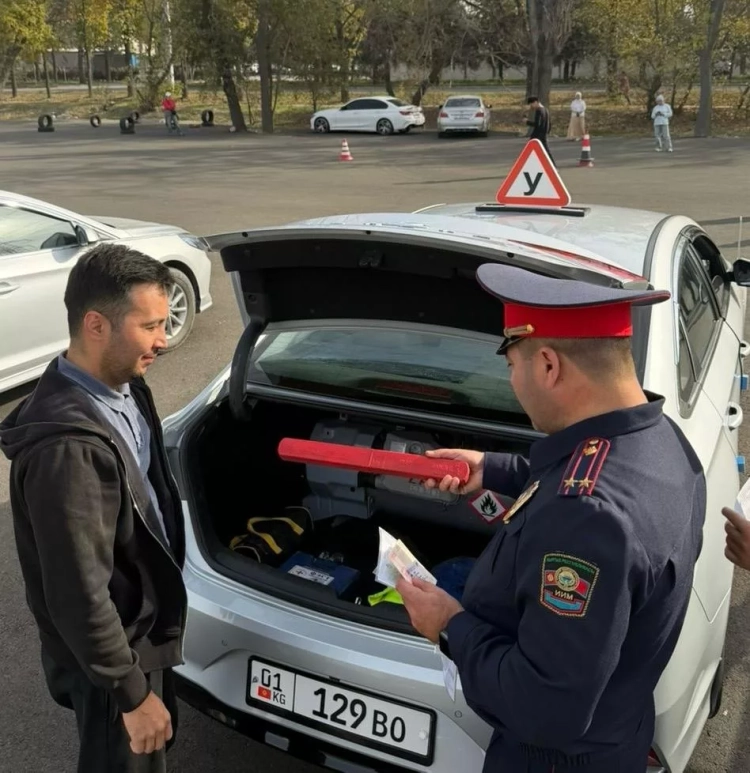
Common Water Shrew Status: Category VI, Near Threatened, NT: R. A rare species for Kyrgyzstan,...

We invite you to participate in the 5 km marathon run (for amateurs: running and walking), which...
100 years/ Style/ Kyrgyzstan. Limon.KG: How the image of the Kyrgyz man has changed...

In order to enhance road safety and reduce the number of traffic accidents, as well as to regulate...

Kyrgyzstan ranked 128th in terms of gross domestic product among 144 countries with $7.2 billion...

Pike Asp Status: 2 [CR: A]. Listed in the Red Book of the Kyrgyz SSR in 1984. A rare...

Date: from March 25 to March 27, 2015 City: Bishkek 6th International Kyrgyz Exhibition Power...
The Kyrgyz Republic is a country of Heavenly Mountains, stunning nature, and hospitable,...

Zhaynakov Amanbek (1941), Doctor of Physical and Mathematical Sciences (1985), Professor (1987),...

Aral Barbel Status: 2 [CR: C]. Species extinct in Kyrgyzstan....

Broad-eared bat Status: Category VII, Lower Risk/least concerned, LR/lc....

Ismankulov Almazbek Osmonalievich (1963), Doctor of Medical Sciences (2000) Kyrgyz. Born in...
Kyrgyz illusionists have once again made a name for themselves. Radislav Safin and Olga Kramer have...

Bishkek resident Nursultan Alibekov won the online voting of the "Guy of the Month"...

Historical-Architectural and Modern Attractions, as well as Natural-Ecological Complexes Cities...

Sociable Plover Status: III category, Critically Endangered, CR, A3bc. Endemic to Kazakhstan and...

Korolkov’s Sage Status: VU. A rare narrow endemic species. A highly decorative plant....
Kyrgyzstan is a small country bordering Uzbekistan, Kazakhstan, and Russia. The main attractions...
Kyrgyz illusionists Radislav Safin and Olga Kramer received the highest score from the jury on the...

Hairy Flowering Plant Aulie-Ata Status: EN. A representative of a monotypic section, a narrowly...

Chuy Ostroluchka Status: 2 [CR: C]. Possibly already extinct in Kyrgyzstan, an endemic...

Transport activities and cargo storage. In January-June of this year, the volume of cargo...

Little Bustard Status: VI category, Near Threatened, NT. It has apparently not bred in Kyrgyzstan...

Saker Falcon Status: IV category, Endangered, EN, A2bcd+3bcd. The population of the species in...
"Kyrgyzstanis have once again proven that our country is rich in talent," reports the...

html Turkestan Catfish Status: 2 [VU: E]. The only representative of the genus in...

Zaryl Sharshenalieva (1935), Doctor of Chemical Sciences (1985), Professor (1992) Kyrgyz. Born in...

Broad-stamened Tulip Status: VU. A narrow endemic of the Alai Ridge....

Lelevkin Valery Mikhailovich (1944), Doctor of Physical and Mathematical Sciences (1989),...

Pskem Onion Status: EN. A very rare species with a shrinking range in the Western Tien Shan....

Menzbier’s marmot Status: V category, Vulnerable, VUB1+2c. Rare species. Endemic to the Western...

Anna Semyonovna Kramaryova has turned 100 years old — the teacher of Chingiz Aitmatov. Anna...

Short-toed Eagle Status: V category, Vulnerable, VU: R. The only representative of the genus in...

Spotted or Diadem Snake Status: Critically Endangered (category CR C2b). One of the 4 known...

Mountains: Ak-Suu - Karavshin (Asian Patagonia)...

Slender-billed Curlew Status: III category, Critically Endangered, CR, C2a(ii); D. One of 3...

Knorring’s Haw-tree Status: VU. A narrowly endemic species....

Kashgarian Bean Caper Status: VU. Rare, little-studied endemic species....

Sievers’s Apple-tree Status: LC category. A polymorphic species of the mountain-central Asian...

Sadzha Status: V category, Vulnerable, VU: R, Monotypic species....

Intermediate Hyalolaena Status: VU. Endemic. One of three species growing in Kyrgyzstan....

Minkwitz’s Bastard Toad-Flax Status: CR. Subendemic. An extremely rare relict plant that is...

In order to improve the quality of services provided in the tourism sector, the Department of...

Snow Leopard Status: III. Critically Endangered, CR C2a(i): R, C1....

Gray Monitor Status: Category CR A4bc; E. In Kyrgyzstan - fragmented populations of the declining...

Lepidolopha Komarovii Status: EN. An endemic species of mountainous Central Asia, representative...

Protected Natural Areas of the Kyrgyz Republic “We, the people, will lose part of our essence if...